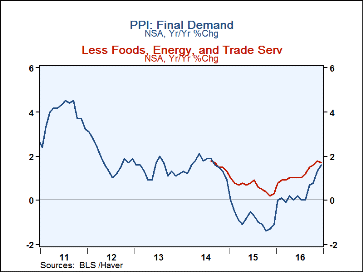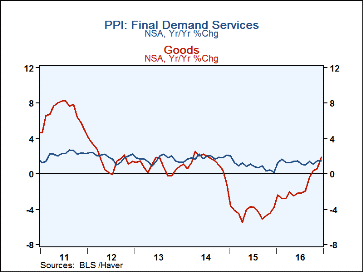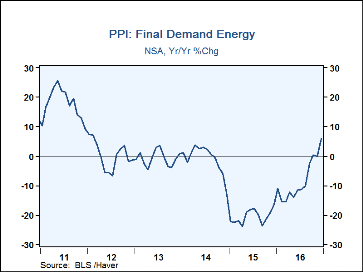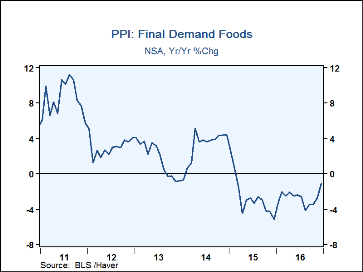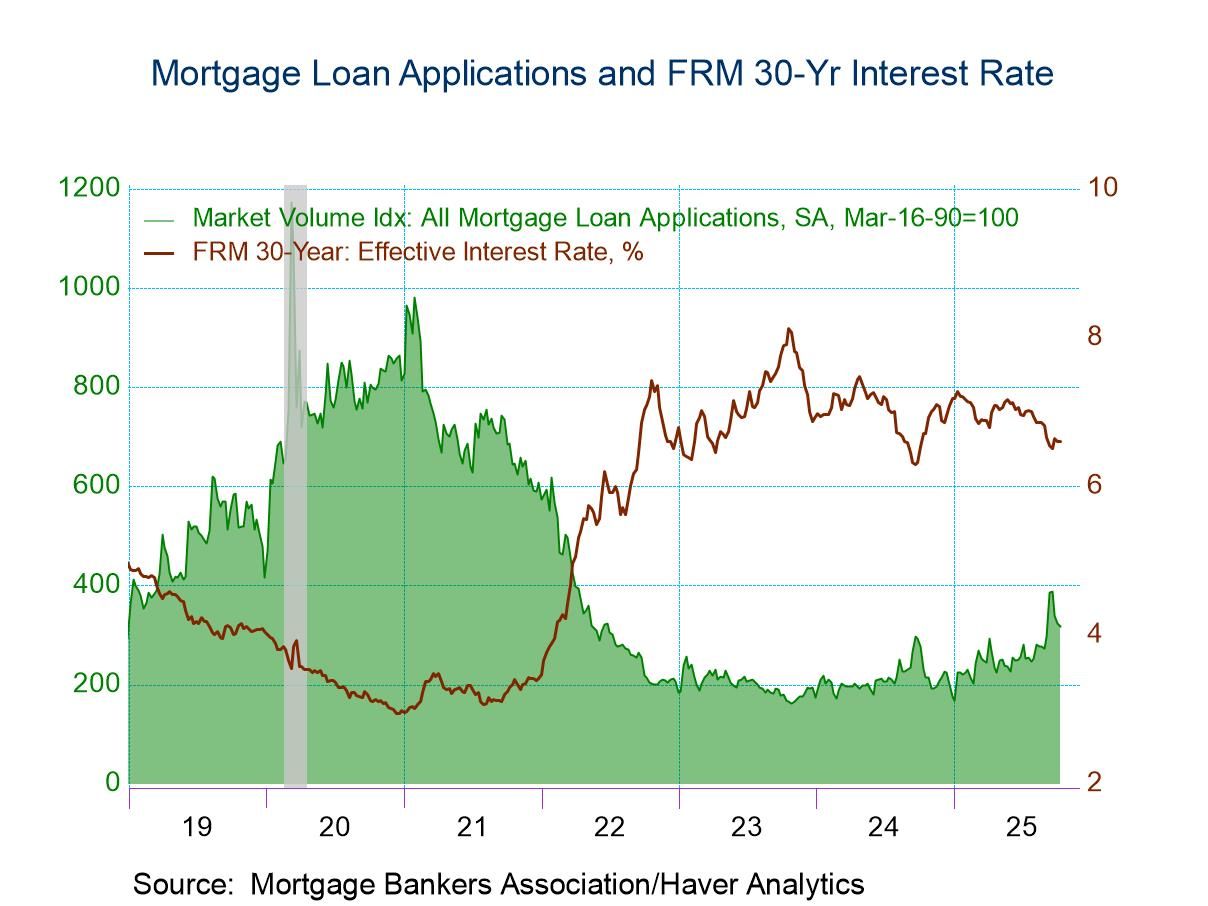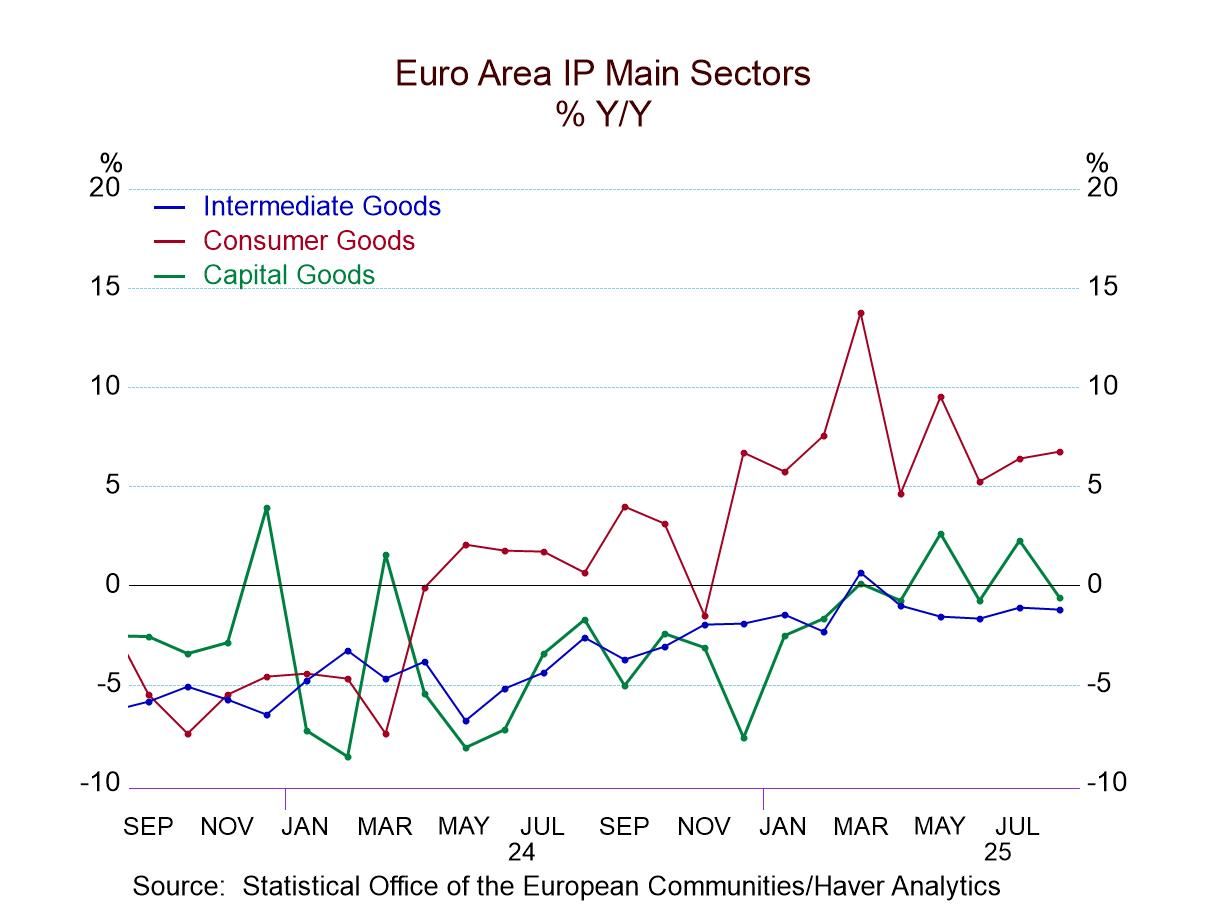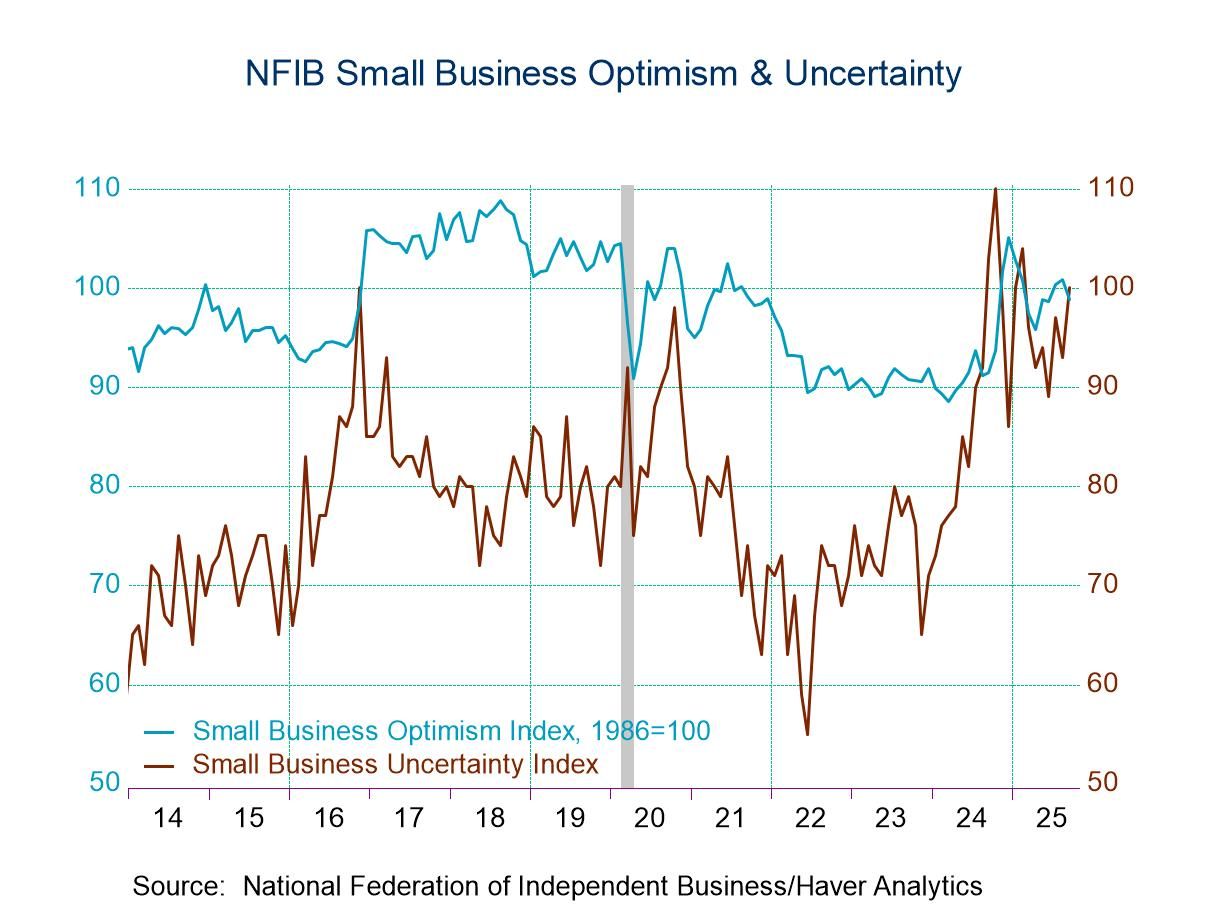 Global| Jan 13 2017
Global| Jan 13 2017U.S. Producer Prices Increase An Expected 0.3%
by:Tom Moeller
|in:Economy in Brief
Summary
The headline Final Demand Producer Price Index increased 0.3% (1.6% y/y) during December after an unrevised 0.4% November rise. The rise matched expectations in the Action Economics Forecast Survey. During all of 2016, prices [...]
The headline Final Demand Producer Price Index increased 0.3% (1.6% y/y) during December after an unrevised 0.4% November rise. The rise matched expectations in the Action Economics Forecast Survey. During all of 2016, prices increased 0.4% after a 0.9% decline in 2015. The PPI excluding food and energy prices rose 0.2% m/m (1.6% y/y) in December, also as expected.
An updated measure of "core" PPI inflation has evolved, known as final demand prices excluding food, energy, and trade services prices. It is available only back to 2014. This measure rose a minimal 0.1% (1.7% y/y) in December following a 0.2% November rise. During all of last year, however, the 1.2% rate of increase was double the 2015 increase. Prices of trade services improved 0.2% (1.0% y/y) following a 1.3% jump.
Prices of final demand goods jumped 0.7% (1.9% y/y). It reflected the strong 2.6% increase (5.9% y/y) in energy prices which followed 0.3% slip. This monthly strength was accompanied by a 0.7% rise (-1.1% y/y) in food prices, which followed a 0.6% increase.
Nondurable goods prices excluding food & energy remained unchanged (+3.5% y/y) for the second month in the last three. Finished durable goods prices increased 0.5% (1.0% y/y) following a 0.1% dip. Private capital goods prices increased 0.4% (0.7% y/y).
Prices of final demand for services notched 0.1% higher (1.5% y/y) following a 0.5% jump. Trade services prices gained 0.2% (0.9% y/y) after a 1.3% strengthening. Prices for transportation of private passengers declined 2.4% (+0.6% y/y), transportation & warehousing costs edged 0.1% higher (-0.1% y/y).
Final demand construction prices eased 0.1%, following a 0.1% rise. The 0.6% y/y increase compares to up to 3.8% increases during the prior five years.
Prices of processed goods for intermediate demand rose 0.5% (1.8% y/y), the fourth consecutive monthly increase.
The PPI data are contained in Haver's USECON database with further detail in PPI and PPIR. The expectations figures are available in the AS1REPNA database.
| Producer Price Index (SA, %) | Dec | Nov | Oct | Dec Y/Y | 2016 | 2015 | 2014 |
|---|---|---|---|---|---|---|---|
| Final Demand | 0.3 | 0.4 | 0.0 | 1.6 | 0.4 | -0.9 | 1.6 |
| Excluding Food & Energy | 0.2 | 0.4 | -0.2 | 1.6 | 1.2 | 0.8 | 1.7 |
| Excluding Food, Energy & Trade Services | 0.1 | 0.2 | -0.1 | 1.7 | 1.2 | 0.6 | 1.2 |
| Goods | 0.7 | 0.2 | 0.4 | 1.9 | -1.4 | -4.3 | 1.3 |
| Foods | 0.7 | 0.6 | -0.8 | -1.1 | 2.7 | -2.6 | 3.2 |
| Energy | 2.6 | -0.3 | 2.5 | 5.9 | -8.4 | -20.6 | -0.9 |
| Goods Excluding Food & Energy | 0.3 | 0.2 | 0.1 | 1.7 | 0.8 | 0.4 | 1.5 |
| Services | 0.1 | 0.5 | -0.3 | 1.5 | 1.3 | 0.9 | 1.8 |
| Construction | -0.1 | 0.1 | 0.7 | 0.6 | 1.1 | 1.9 | 2.9 |
| Intermediate Demand - Processed Goods | 0.5 | 0.3 | 0.3 | 1.8 | -3.0 | -6.9 | 0.6 |
Tom Moeller
AuthorMore in Author Profile »Prior to joining Haver Analytics in 2000, Mr. Moeller worked as the Economist at Chancellor Capital Management from 1985 to 1999. There, he developed comprehensive economic forecasts and interpreted economic data for equity and fixed income portfolio managers. Also at Chancellor, Mr. Moeller worked as an equity analyst and was responsible for researching and rating companies in the economically sensitive automobile and housing industries for investment in Chancellor’s equity portfolio. Prior to joining Chancellor, Mr. Moeller was an Economist at Citibank from 1979 to 1984. He also analyzed pricing behavior in the metals industry for the Council on Wage and Price Stability in Washington, D.C. In 1999, Mr. Moeller received the award for most accurate forecast from the Forecasters' Club of New York. From 1990 to 1992 he was President of the New York Association for Business Economists. Mr. Moeller earned an M.B.A. in Finance from Fordham University, where he graduated in 1987. He holds a Bachelor of Arts in Economics from George Washington University.


